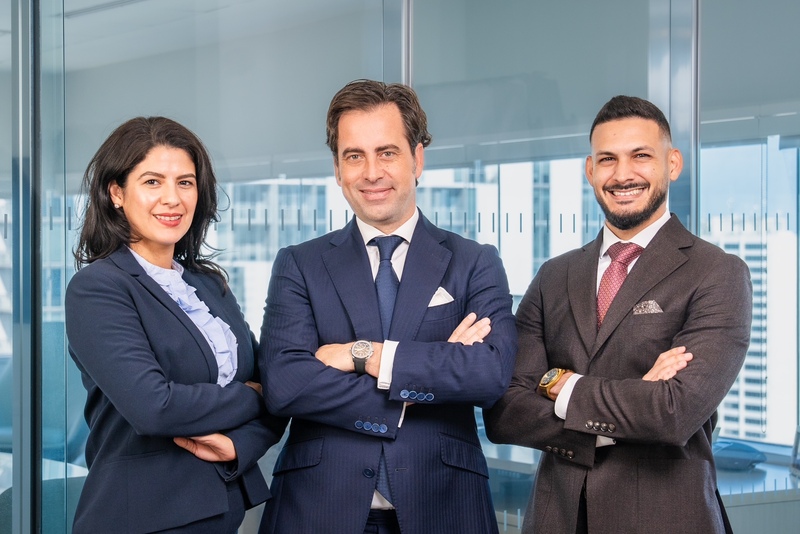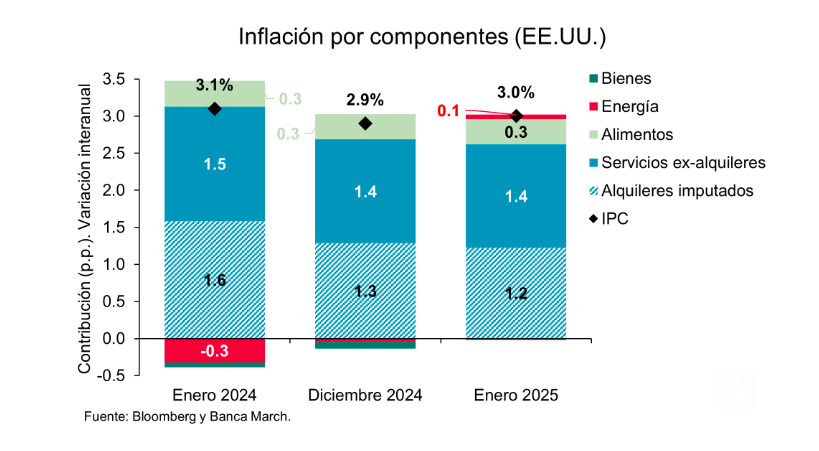AI, Small & Medium Caps, and Emotion Management Featured at the Funds Society Investment Summit in Houston
| For Guadalupe Barriviera | 0 Comentarios

Artificial intelligence (AI), Small and Mid-cap companies, and the role of emotions in investing were key topics at the V Funds Society Investment Summit in Houston, an event that brought together professional investors from Texas and California on Thursday, March 6.
International asset managers M&G, State Street Global Advisors, and Vanguard presented investment opportunities in AI-related companies as an emerging technology. They noted that, based on historical data, small and mid-cap stocks are positioned to offer greater value. A speaker from Vanguard emphasized the importance of maintaining calm and discipline, especially during market turbulence, through behavioral coaching.
The event also featured asset managers Thornburg Investment Management and Muzinich & Co, who focused on fixed income. To access the full report, click here.
AI: An Innovation Set to Keep Growing
“Do we believe this is a good time to invest in AI? The answer is absolutely yes,” said Jeffrey Lin, Head of Thematic Equities at M&G, at the start of his presentation. He introduced the M&G Global Artificial Intelligence Themes Fund, a thematic global equity fund launched in November 2023.
Lin approached the topic from a historical perspective, explaining that in the 1950s and 1960s, computer scientists began considering the possibility of artificial intelligence—essentially, a computer capable of making decisions that humans typically make.
With a background in Electrical Engineering, Lin stated, “We do not see this innovation stopping in the future. As processing power increases, the potential processing market continues to expand.” He also affirmed that “as long as technology continues improving its performance, there will be demand for it.”
According to Lin, AI’s technological development is currently focused on generative AI, with the next phase being AI with agents. “In other words, these systems will truly begin to reason and engage in much deeper conversations with humans,” he described, noting that this evolution “can significantly enhance the user experience.” He also mentioned autonomous vehicles, “which are getting closer to becoming a reality.”
M&G believes AI is still in its early stages compared to previous innovation cycles, such as the rise of microprocessors and PCs, or the advent of the internet and mobile phones. This underscores the long-term investment opportunity.
The fund categorizes AI investment opportunities into three main groups: enablers (companies providing the underlying core technology for AI), providers (companies leveraging enabling technology to create AI-enhanced products or services), and beneficiaries (not necessarily tech companies in the traditional sense, but businesses that can use AI to drive revenue growth and/or improve profitability).
The target weighting for each category ranges from 25% to 40%. However, while managing the strategy, they found that these broad categories do not move in sync. “We have a vast universe of companies to analyze, and at any given time, we can dynamically shift between these groups. For investors, we believe the long-term growth opportunity remains very strong,” Lin asserted.
Cautious Optimism and a Diversified Portfolio
Keith Medlock, Senior Vice President and ETF Investment Strategist at State Street Global Advisors, presented in Houston the first U.S.-listed ETF, the SPY, highlighting its democratic, cost-effective, and liquid nature.
As an introduction, Medlock recalled that the ETF has existed since 1993, having survived the dot-com bubble, the 2008 financial crisis, and the COVID crisis. “When you look at how the SPY ETF has traded over time, you see that the ETF structure holds up quite well,” he affirmed.
A Mathematics and Economics graduate from the University of Arkansas, Medlock stated that State Street’s base scenario is a soft landing. They are “cautiously optimistic” and plan to add risk assets gradually, assuming investors still hold many cash management tools in their portfolios.
Medlock expects GDP growth above the average, which should benefit risk assets. State Street anticipates that the U.S. will maintain its fundamental economic and earnings advantages over other developed markets, driven by AI development and Trump’s new political agenda. The latter could particularly benefit U.S. cyclical and small-cap companies, according to the firm.
Regarding inflation, their most likely scenario projects 2.5%. “Our preference would be to buy dips in stocks. That would be our overweight position,” he noted, explaining that cyclical stocks perform well when both growth and inflation are above average.
The current high uncertainty and potential for increased volatility necessitate an allocation beyond the traditional 60-40 model. Medlock believes that as growth and inflation reaccelerate, portfolios overweight in small and mid-cap stocks and cyclical equities will gain an advantage based on historical trends.
Cyclical exposures to domestically focused companies, including U.S. small caps and regional banks, may be less affected by potential trade conflicts and could benefit more from rising investment and domestic consumption while trading at economic valuations.
When considering “high-quality, low-volatility” exposures, Medlock pointed to technology and biotech stocks, as well as European growth sectors.
Medlock proposed a diversified portfolio consisting of equities, actively managed fixed income (high-quality bonds with a maximum duration of six years), and alternative assets such as gold. “There is no need to rush into fully reinvesting in an equity portfolio,” he emphasized.
Regarding gold, he noted that they do not expect “a major bullish performance, but gold’s defensive characteristics remain intact, which is why I want it in the portfolio. If stocks decline and there’s a general risk-off environment with a bond selloff, it could be a double hit, as rising rates would also widen bond spreads.”
The ETFs comprising Medlock’s proposed portfolio include SPSM (SPDR® Portfolio S&P 600™ Small Cap ETF), KRE (SPDR® S&P® Regional Banking ETF), XNTK (SPDR® NYSE Technology ETF), TEKX (SPDR® Galaxy Transformative Tech Accelerators ETF), and XBI (SPDR® S&P® Biotech ETF) for equities.
The bond portfolio includes the SPDR® DoubleLine® Total Return Tactical ETF (TOTL), SPDR® Blackstone Senior Loan ETF (SRLN), and SPDR® Portfolio Intermediate Term Corporate Bond ETF (SPIB). Lastly, alternative diversification includes the ETFs GLD (SPDR® Gold Shares), GDML (SPDR® Gold MiniShares® Trust), CERY (SPDR® Bloomberg Enhanced Roll Yield Commodity Strategy No K-1 ETF), and SPIN (SPDR® SSGA US Equity Premium Income ETF).
Controlling Impulses and Staying in the Market
Ignacio Saralegui, Head of Portfolio Solutions for Latin America at Vanguard, focused on the most challenging aspect of investing: emotions and impulses that tend to emerge during market downturns. He addressed financial advisors in the audience, who often receive calls from clients during periods of financial turbulence.
His presentation, titled “Stay the Course,” outlined the philosophy of John Bogle, Vanguard’s founder. The core idea is that bear markets and corrections are part of investing, making a long-term approach essential. Since 1980, there have been 12 bear markets, with declines of around 20% or more. However, bull markets have been longer and stronger than the bear markets that preceded them, demonstrating the importance of resilience in times of panic.
“Clients lose control of their emotions and decision-making during such times, but staying in the market allows them to grow their portfolios,” he noted. He also cited one of Bogle’s key principles: “Impulse is your enemy; time is your friend.”
To manage these impulses, Saralegui proposed four principles, all within investors’ control: setting clear and appropriate investment goals, maintaining a balanced and diversified portfolio, minimizing costs, and keeping a long-term perspective and discipline.
He highlighted the value of financial advisors in three key areas: portfolio construction, financial expertise, and most importantly, emotional support.
In conclusion, Saralegui reiterated his key message: market volatility tempts investors to alter their portfolios, but abandoning a planned investment strategy can be costly. He emphasized the importance of maintaining investments, avoiding market timing, rebalancing periodically, and sticking to a long-term strategy. “Staying in the market long-term always pays off,” he concluded.










